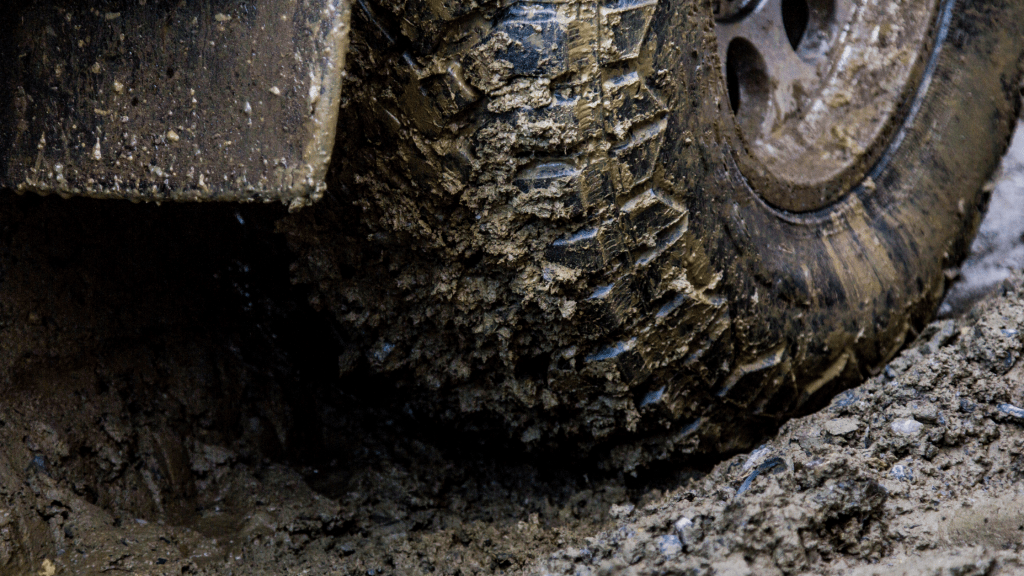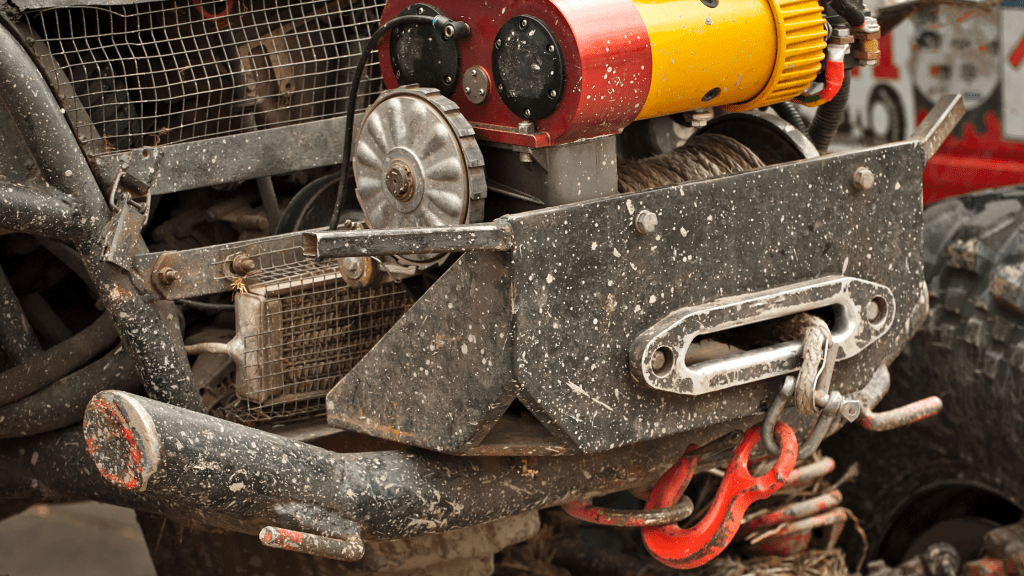There are a few things that require some serious thought when developing your overland vehicle. One of these is your vehicle’s suspension.
Overlanding is unique in the way you travel. More often than not, your time is almost split equally between off-road and on-road driving.
Us Overlanders require a lot from our rigs; we traverse multiple types of terrain, cover a lot of miles, and carry a lot of weight.
As you can imagine, we’re not simply off-roaders, so we need a suspension system that can handle our unique requirements.
Do you need a lift to overland?
One of the first thoughts that cross people’s minds when they think about going off-road is whether they need a lift or not.
To decide if you should put a lift or not, it’s best to think about what type of terrain you plan on mostly traveling. If, for example, you plan to travel only on desert roads, there’s not much need for a lift there. On the other hand, if you plan to travel rocky terrain, a lift could come in quite helpful.
If you decide that you need a lift, it’s not recommended to go too high. For most overlanders needs a 2 – 2.5 inch lift is more than enough. Any higher than this requires extra modification such as upgrading propshafts, upper control arms, etc.
Another downside to going too high with a lift will be reduced performance on the blacktop. This is especially true when carrying an RTT or extra equipment on the roof.
A 2-inch lift is more than enough to put on bigger tires on most vehicles. The bigger tire will give you much better clearance than extreme lifts.
Leaf Springs for Overlanding
Leaf springs do have a place in Overlanding. While they can’t offer the same flex or comfort as a coil spring suspension, they have an excellent ability for load carrying.
If you don’t carry such a heavy load and want more comfort and flexibility, it might be worthwhile considering parabolic leaf springs. However, these are not rated for heavy loads.
Coil Springs
The weight of an overland vehicle will determine what type of coil springs will suit your rig best. If you are only at the planning stage of your vehicle, you have to put some thought into all the other equipment you plan on adding to the vehicle.
Things like steel bumpers, winches, long-range fuel tanks, rooftop tents, etc., will all add considerable weight, so it might be worth considering heavy-duty springs.
The downside of heavy-duty springs is that if you remove the added weight and want to use your vehicle as a daily driver, they can be very stiff and uncomfortable.
If you don’t have a lot of equipment and your overland vehicle is also your daily vehicle, a set of medium springs will be perfectly adequate.
One thing to watch out for with your new springs is sag. If you find that your springs are starting to sag, it might be time to upgrade to a new set if they are old. If there is considerable sag with new springs, you will need to fork out for heavy-duty ones.
Airbags
If you are going to be carrying extreme weight in the back of your vehicle, then suspension airbags may be just the thing you need.
Airbags are not needed for most off-roaders. However, they come in really useful if you intend to carry heavy loads in the truck bed, are towing a heavy camper, or have a truck bed camper.
The benefit in these scenarios is that once you remove the load, you can deflate the airbag, and it goes back to just normal suspension. Once you need to load up again, you can inflate the airbag and have a suspension capable of handling that load.
The only drawback of the airbags is they affect the dampening and articulation. This could be an issue if you are spending a lot of time off-road with technical trails.
Shock absorbers
Shock absorbers are where things get tricky. It’s going to be one of the most expensive parts of your suspension system and will have a considerable effect on your vehicle’s handling and comfort.
For most of us overlanders, we don’t need to go too extreme here. However, if you do plan on doing moderate off-road, it’s definitely worth upgrading from the shock absorbers.
Serviceable Shocks
When you get into the mid to high-range shocks, you can find what are known as serviceable. This means that after you pommel them for thousands of miles, you can just overhaul them instead of chucking them out and have good as new shocks.
If your budget can stretch to it, I highly recommend these, especially as Overlanding covers huge milage and can take its toll on any shock.
This is not to belittle non-serviceable shocks; these shocks are just as capable. The only issue with non-serviceable shocks is if they start to fail, it means buying a new shock instead of just repairing a small part.
Adjustable vs Non-adjustable
Another benefit of stepping up to mid-range shocks is finding adjustable shocks.
Adjustable shocks are fantastic for Overlanding. They do take a little bit of fiddling around to find your perfect settings, but once you find your comfort level they are a godsend.
When I’m Overlanding, my terrain is constantly changing, I’ve done old logging roads in Northern Quebec to beaches in New Zealand and highways through Europe.
Having the ability to change the suspension for them vastly different terrains in a couple of minutes is worth its weight in gold.
Remote reservoir
Some shocks come with a remote reservoir. This is designed to separate the shock oil and pressurized gas. When the hydraulic fluid and gas mixes it causes the fluid to aerate, thus causing it to lose its damping performance.
Whether you need one or not will again depend on the type of terrain you are driving.
Reservoirs are useful in situations where the shock is being asked to work rapidly, think desert washboard roads or bumpy forest service roads.
When traveling these roads, the shocks are working hard, and there is a lot of pressure build-up plus increased heat. This puts stress on the shock, thus shortening its life span.
If you have a reservoir, it allows the shock to operate with more travel, more space for the fluid and air, and cools the shock down.
OME BP-51 – Best all around
- 51 diameter bore internal bypass
- High quality shocks
- Adjustable
- Have a remote reserv
This is what we’re installing on our Land Rover 110 build. ARB has been around a long time. They have a huge range of stuff for off-roading and Overlanding.
The BP-51 is not the cheapest shock available, but you are still getting a very high quality shock at a low price.
ARB doesn’t hide the fact that they had slight issues when they first came out, but most new products have teething problems. They have since rectified any problems, and these shock absorbers are now solid.
These Old Man Emu shocks are both adjustable and have a remote reservoir, making it easy to go from desert washboard roads to highways.
The BP-51 one stands for the 51 diameter bore internal bypass that these come with.
These are definitely worth the money.
Bilstein 5100 – Best for weekend warriors
- Brand New Set of Bilstein Monotube Shock Absorbers, 2 Fronts and 2 Rear
- 2 x Bilstein # 24-239370 Front Shocks, 46mm | 2 x Bilstein # 24-186728 Rear Shocks, 46mm
When you start looking into suspension, you will quickly realize that Bilstein is a very popular brand at the top level. Their 5100 shock is a great option for weekend warriors or someone traveling milder terrain.
It’s a good option if you’re looking to lift your vehicle but not traversing rugged terrain at moderate speeds.
These shocks can add various sizes of lift and an extra level of comfort.
While they may not be the greatest shocks in the bunch, they definitely have the high quality of Bilstein behind them.
Bilstein targeted these shocks at people who like to get out there but aren’t ready to convert their rig to a fully loaded rock crawler.
Fox 2.0 – Best Off-Road
- Part Numbers 985-24-015 and 985-24-016
- Set of 4 Shocks for vehicles w/1.5-3.5 front lift and w/1.5-3.5 rear lift
- Fits 2WD & 4WD vehicles
- Shock boots & Roost Shields sold separately. All necessary washers, bushings, reservoir clamps, and nuts included. Factory shock mounting bolts are reused for installation. Mounting plates sold separately.
- Foxs limited one (1) year warranty protects against defects and premature failu
If you’re looking for a step up from the Bilstein 5100 then the Fox 2.0 is a solid option.
The Fox 2.0 is more expensive than the Bilstein 5100 but comes with some advantages. It has better heat dissipation thanks to its light aluminum body.
Unlike the Bilstein 5100, the Fox 2.0 is rebuildable, giving you a shock for a lifetime.
Where these shocks really shine is at rock crawling. They’re great for flexing and find themselves most at home among the rocks.
These shocks travel nicely on the road, although you may find that the ride is a little firmer.
If your trails are tough, rocky, or you spend a considerable amount of time off-road, then these may be the ones for you.
OME Nitrocharger Sport – Best Budget
- This complete kit includes: Coil Springs: 2850J / 2863J
- Nitrocharger Sport Shock Absorbers: 60070L X 2 / 60071L X 2
- Steering Stabilisers: OMESD24 X 1 Caster Kit: OMECA77B
This is another option from ARB in the lower price range. These are a great budget-friendly option and have been tested by thousands of owners around the globe.
The nitrochargers are a huge step up from your stock suspension for a very low price.
These are not the softest riding shocks, but they are great for weight carrying. If you are looking for something softer, take a look at the BP-51 shocks.
You would be hard-pressed to find a cheaper shock with as much R&D as this. It’s also backed by ARB’s stellar customer support and an excellent warranty.
Summary
Choosing suspensions can be a minefield. What we as overlanders should keep in mind is we don’t need to upgrade too much like heavy-duty off-road rigs.
A good mid-range adjustable suspension is more than enough for 99% of overlanders. This gives you the ability to swap between off-road and on-road effortlessly.
FAQs
What is the primary purpose of upgrading my vehicle’s suspension for overlanding?
Upgrading your vehicle’s suspension for overlanding ensures that your vehicle can handle the unique requirements of overlanding, which often involves traversing multiple types of terrain, covering long distances, and carrying heavy loads.
How does a lift affect the performance of an overlanding vehicle?
A lift can enhance the vehicle’s ability to traverse rocky terrains. However, going too high with a lift can reduce performance on regular roads, especially when carrying additional equipment on the roof.
What are the advantages of using coil springs for overlanding?
Coil springs are versatile and can be chosen based on the weight of the overland vehicle. Heavy-duty springs are suitable for vehicles with added equipment, while medium springs are ideal for lighter overland vehicles that double as daily drivers.
Why might someone consider using suspension airbags for overlanding?
Suspension airbags are beneficial for those carrying extreme weight in their vehicle’s back or towing heavy campers. They can be inflated to handle heavy loads and deflated for normal suspension when the load is removed.
How do adjustable shocks benefit overlanders?
Adjustable shocks allow overlanders to modify the suspension settings based on the changing terrains they encounter, offering optimal comfort and performance.
Why are serviceable shocks recommended for overlanding?
Serviceable shocks can be overhauled after extensive use, making them cost-effective in the long run. Overlanding involves covering huge mileage, which can wear out shocks, so having the option to service them instead of replacing them entirely is beneficial.
- Tips and tricks For Setting Up Camp Like a Pro - September 11, 2023
- The Best Multi-Tools for Overlanding Adventures - August 25, 2023
- Off-Road Navigation Tips for Overlanders - August 13, 2023






